The only double-helix wooden structure in the world
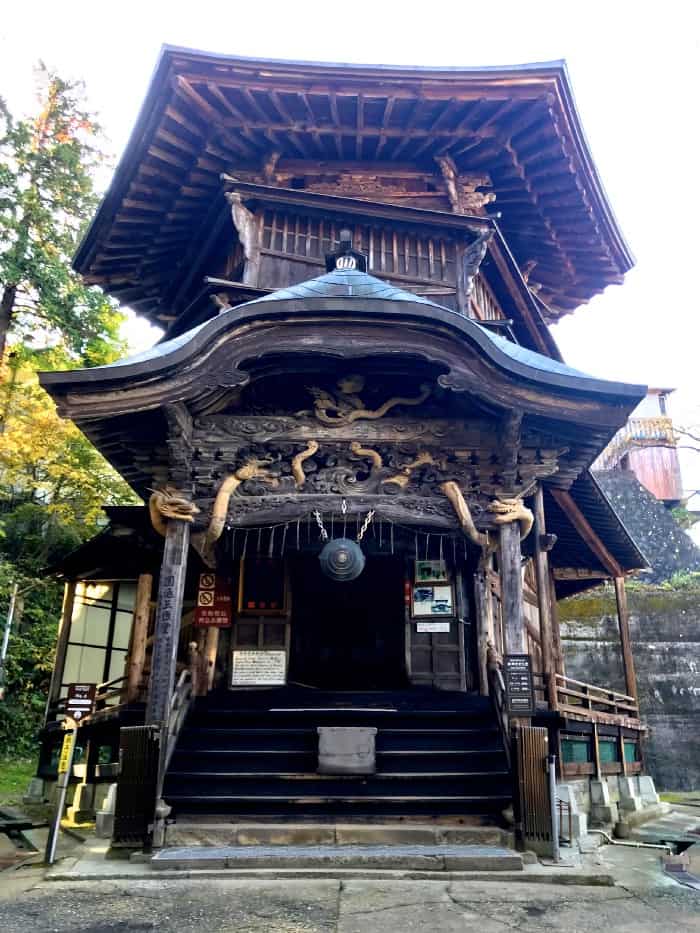
Nestled on a hillside overlooking the small city of Aizuwakamatsu in Fukushima Prefecture is an extraordinary shrine. Constructed in 1796, this architectural marvel bears the official name Entsu Sansōdō, 円通三匝堂, which translates to “the temple of three turns around.”
Above the entrance of this entirely wooden structure, an intricately carved dark wood lintel showcases two lighter-colored dragons entwined as protectors of this sacred space. But that remarkable sight pales in comparison to the building itself.
Sazaedō’s Unique architecture
Upon entering the building, visitors turn left and begin an uphill climb. The interior reveals a continuous ramp winding its way up, before passing over an arched bridge, and then descending back down. This unique double-helix design earned the shrine its popular name, Sazaedō. Sazae means spiral turban shell, and dō refers to temple or shrine.
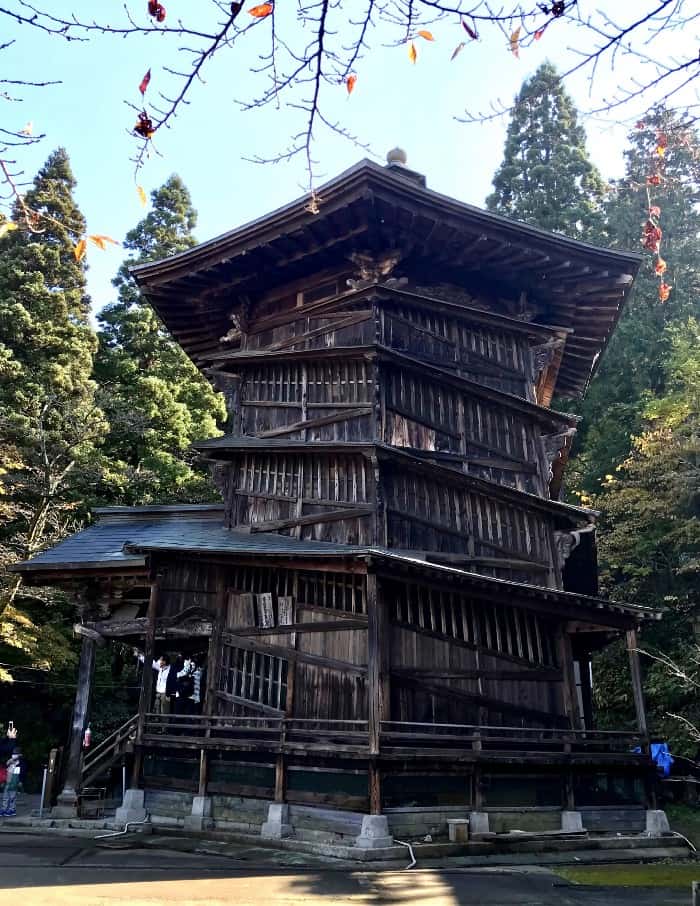
The windows and eaves follow the incline of the ramps, tracing the spiraling path upwards and downwards. The sloping walkway maintains an unbroken course without any overlaps.
Remarkably, Sazaedō’s design did not come from the genius of an architect but rather from the ingenuity of the head priest of the nearby Shōsōji Temple, Ikudō, whose statue graces the entrance of the shrine.
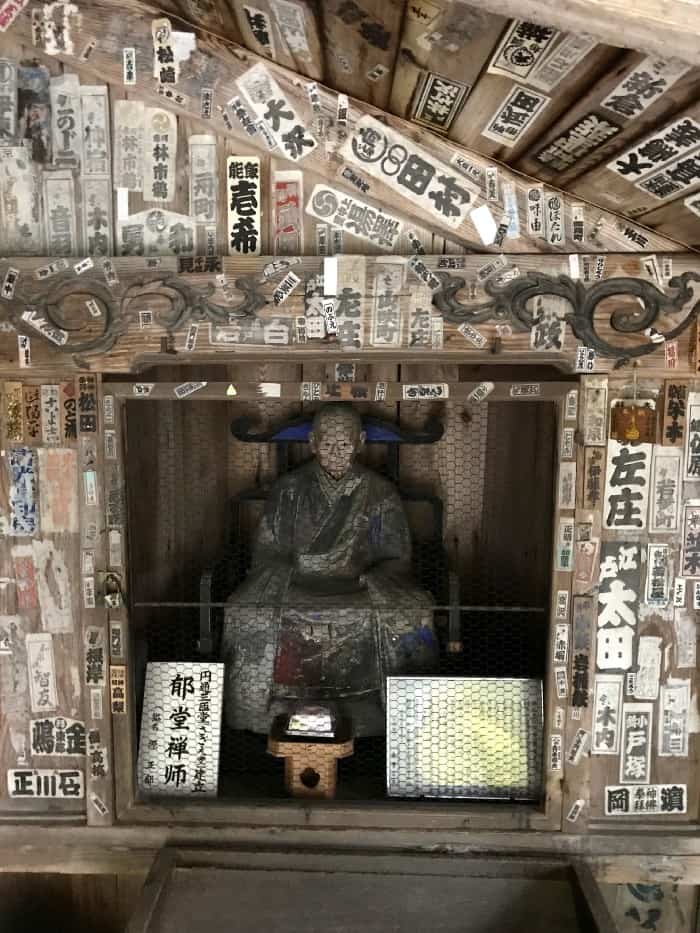
The exact source of his inspiration remains a mystery. Yet, it is believed that renewed access to Western books in 1720, thanks to Tokugawa Yoshimune lifting a long-standing ban, provided Ikudō with valuable scientific knowledge that likely influenced his design. Some speculate that he may have seen drawings of Leonardo da Vinci’s double-helix staircase at Château de Chambord in France, but there is no way to know.
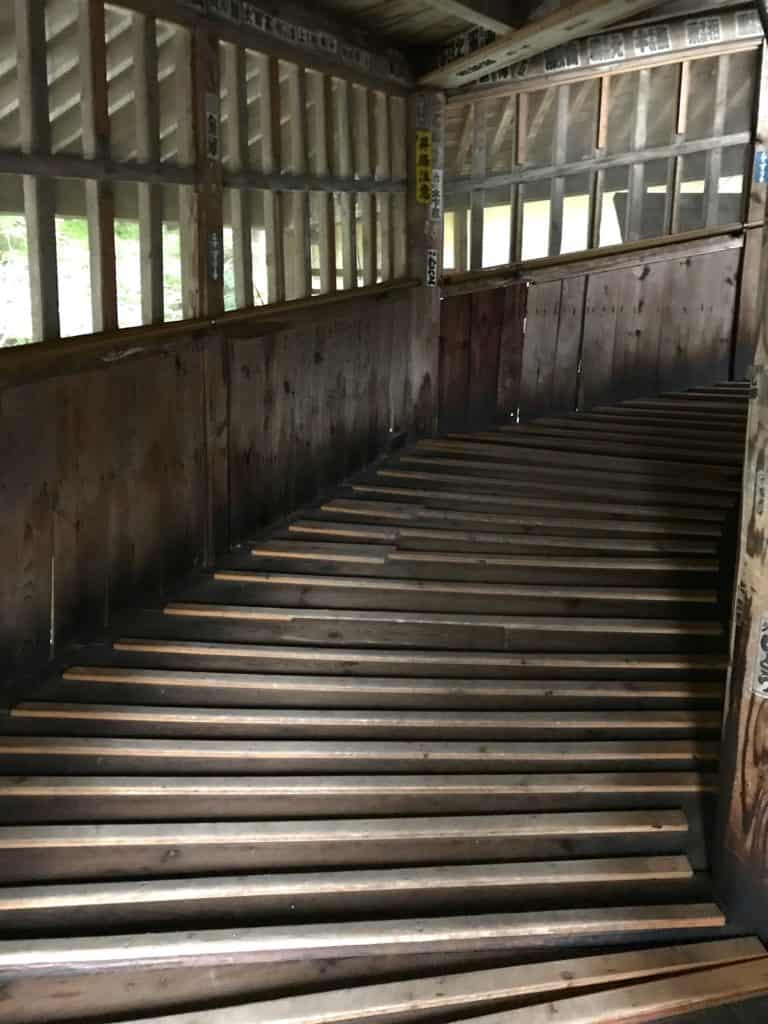
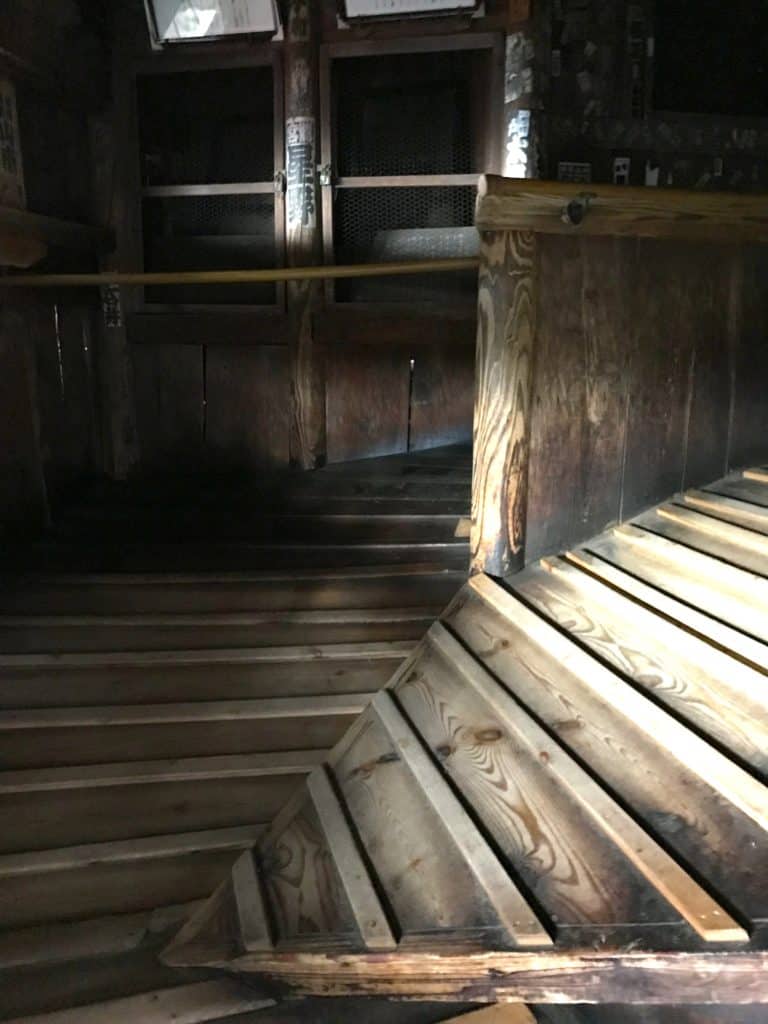
One-stop pilgrimage
Sazaedō was built at a time when pilgrims undertook journeys across western Japan to visit 33 temples dedicated to Kannon, the Buddhist goddess of mercy. These pilgrimages required a significant investment in time and money. Nevertheless, people were driven by their piety to visit all the temples, offering prayers and purchasing protective amulets at each one. Sazaedō offered a revolutionary alternative.
Within its walls, all 33 Kannon statues were placed in alcoves along Sazaedō’s one-way spiral hallway, condensing the entire pilgrimage into one temple. This innovative idea made Sazaedō immensely popular, transforming it into a convenient one-stop pilgrimage destination. The success of this design inspired the construction of other spiral temples throughout Japan, although none rivaled the impressive three stories of Sazaedō.
Its official name, Entsu Sansōdō, not only alludes to its “three turns around” design but also refers to the Buddhist etiquette of walking three times clockwise around an image of the Buddha, a practice observed by all pilgrims who visit Sazaedō.
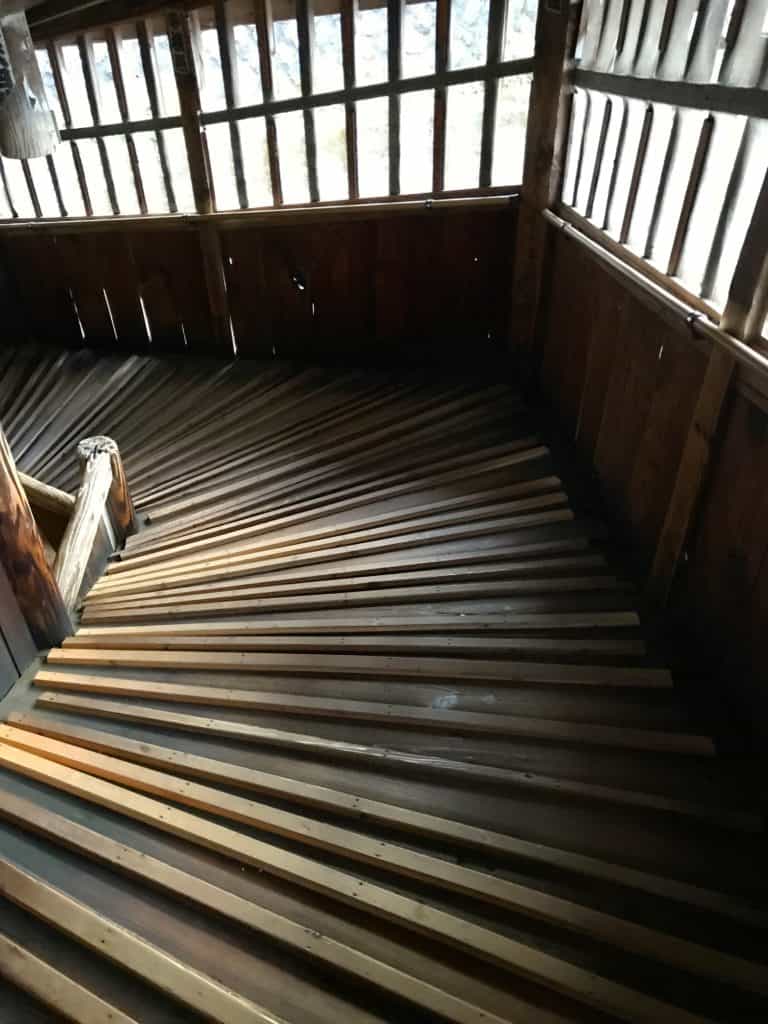
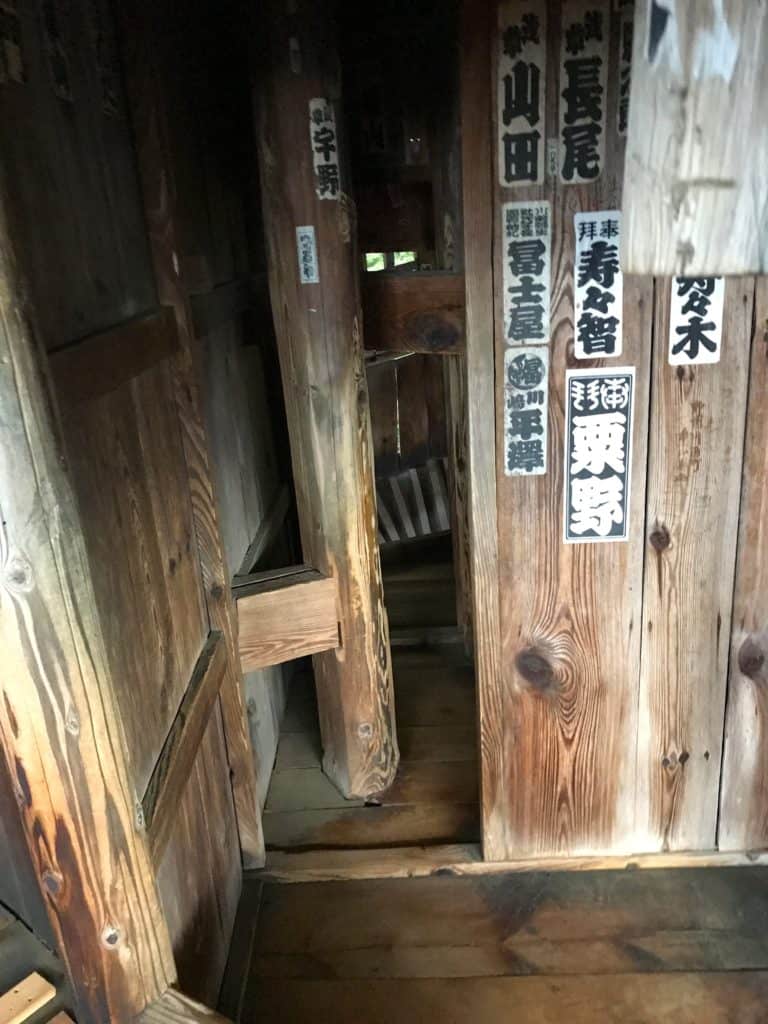
The building’s ceiling and interior walls are covered with thousands of paper stickers called senjafuda, which pilgrims used to affix to mark their visit to shrines and temples. These stickers typically display the person’s name and sometimes their place of residence. The multitude of senjafuda in Sazaedō provides a window into bygone days when visiting temples was not only a spiritual endeavor but also a popular recreational activity.
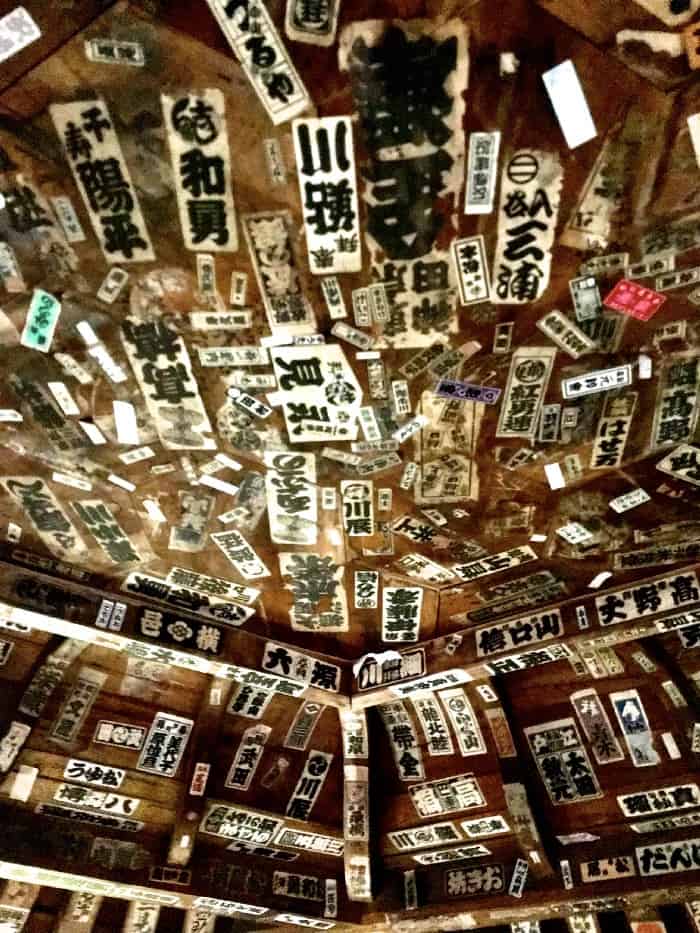
In 1868, the Meiji government ordered the separation of Buddhism and Shinto. This decree triggered the widespread destruction of Buddhist temples and statuary. During this difficult time, the 33 Kannon statues were removed from Sazaedō, and the building was redefined as a Shinto shrine.
Today, Sazaedō stands as a testament to its rich history and remains the only double-helix wooden structure in the world. Instead of statues of Kannon, the alcoves hold illustrations of moral teachings compiled by Matsudaira Katataka, the 8th lord of the Aizu clan, who ruled the area during the first half of the 19th century.
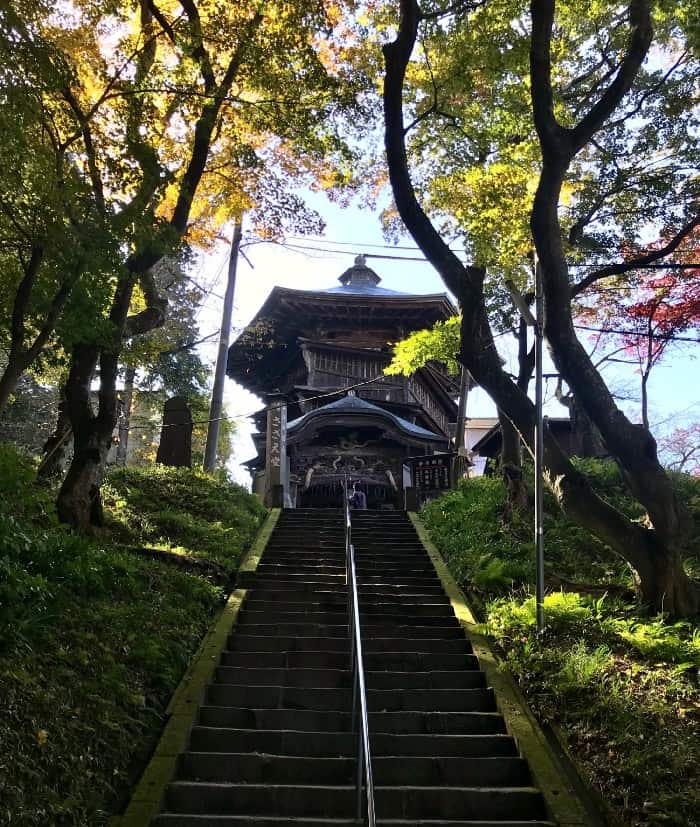
Although Aizuwakamatsu is quite far off the beaten track, it’s well worth a visit to see the amazing Sazaedō for yourself.
And while you are there, take a moment to visit the nearby shrine to the young samurai who committed seppuku, ritual suicide, during the close of the Boshin civil war in 1868.
References:
http://www.sazaedo.jp/, 朝日新聞1972年11月20日, signs.
If you have questions about Japan or suggestions for articles, please add them in the comments. For more photos and information on Japan, follow me on instagram at: https://www.instagram.com/more_than_tokyo/




